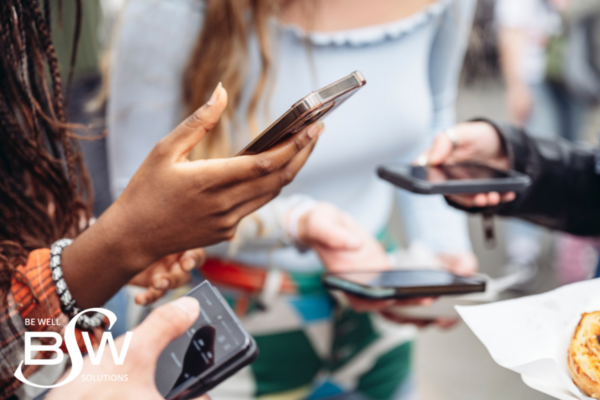Technology has helped increase opportunity, connection, entertainment, and even wellness. We can access these things and more with the click of a button or swipe of a finger. However, navigating life in a hyper-digital world can come with challenges. According to the American Psychological Association, “nearly one-fifth of Americans (18 percent) identify the use of technology as a very or somewhat significant source of stress.” Creating a more tech-healthy balance in life starts with learning how to use it thoughtfully and responsibly.
Know When to Turn it Off
A key strategy in creating healthier habits with technology is knowing when to use it and when to put it down or turn it off. Start by creating boundaries with phones and devices while driving. Keep your phone out of reach and limit notifications to minimize distractions whenever you’re behind the wheel. Next, think about the boundaries you set with technology before bedtime. Screentime before bedtime is one of the biggest sleep disruptors. It can make it harder for your body to fall asleep and stay asleep. Turn off screens at least thirty minutes before bedtime and choose to wind down with relaxing activities like stretching, meditation, prayer, or reading. Finally, consider setting limitations with technology during other significant points of your day to prioritize family time or relaxation. These limitations could include a rule of no devices or television during dinner time or utilizing do-not-disturb features. Knowing when to turn it off can keep technology from becoming an unfavorable distraction.
Prioritize Real Communication
While technology can make communication quicker and more direct, nothing replaces genuine face-to-face communication and conversation. Feeling disconnected or misunderstood when talking or typing through a screen is becoming more common. We can miss out on social cues, body language, and real-life events that technology distracts us from. Embrace the prompt communication benefits that technology has to offer, but don’t let it become a replacement for in-person connection.
Be Responsible with Social Media Use
Social media can be a tricky area of technology to manage. It’s a productive place to share ideas and create engagement, but too much can influence our mental and physical health. We often forget that not everything we see in a post paints an honest picture of life. It’s easy to feel frustrated by what someone commented. We even lose hours of sleep from mindless scrolling. If you notice that social media is creating more disruptions to your day, you might want to set some boundaries on your usage. Limit time spent on particular apps or consider deleting them altogether. Focus on positive interactions with social media and be mindful of the content you create and consume.
Manage Notifications and Alerts
Daily, we get bombarded with constant notifications and alerts. As they pile up, we become more distracted, less focused, and compulsively check our devices. Take time to decide which notifications are priority and which can wait. Turn off less important alerts and utilize the do-not-disturb feature to minimize distractions at specified times. Keep phones out of reach during significant moments or choose specific times to check non-emergent notifications. Limiting the alert distractions will allow you to be more present in your day.
Recharge by Unplugging
Technology has become a part of nearly every area of our lives. We use it at work, school, and home in our personal lives. Taking time away from it is a necessary way to recharge. Whether you have an hour or just a few minutes, find screen-free ways to refresh and restore from the toll that tech can take on our day. Take a short walk outside, practice several rounds of deep breathing, or meet up with a friend or family member. Purposefully unplugging helps us manage usage and create a more balanced approach for a tech-healthy life now and in the future.
Continue Reading August 2024 Newsletter: 6 Tips for Packing a Healthy Lunch

